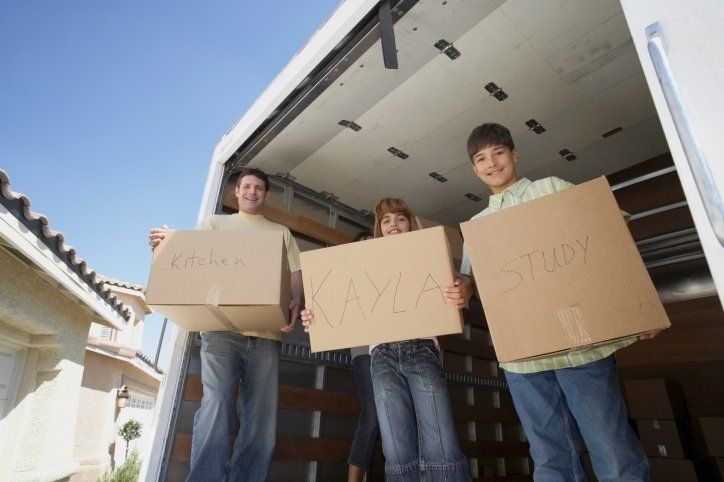Open House Etiquette
Have you ever been out for a Sunday drive, saw an “open house” sign, and decided to pop in for a look, even though you weren’t planning to buy? If so, you aren’t alone. Open houses tend to attract not only potential buyers, but also curious neighbors, those seeking decorating ideas for their own homes, and area real estate agents.
An open house may seem antiquated in the age of virtual tours, but there’s still something about seeing a house in person. You can peek in the closets, get a feel for the neighborhood, and see if the back yard is actually as large as it looks online. By visiting open houses, you can get a feel for the market casually at your own pace, so it’s a great way for new home buyers to get a sense of what they like and don’t like before they reach out to a real estate agent. If you’re a seller, an open house is a great way to create a buzz. The more eyes on your home the better. You never know when a curious neighbor will decide your house would be perfect for them or someone they know.
Despite the benefits of open houses, they can be a little awkward. For buyers, you don’t quite know what you can and can’t do since it’s still someone else’s house. For sellers, it can be difficult having strangers walking through your house, peeking in your closets. Unless attending open houses is how you spend your weekends, you probably haven’t been to enough to know what’s expected and what might be frowned upon.
Open House Etiquette for Home Buyers
While there aren’t any rules for open houses, there are some generally accepted things you should and shouldn’t do. Here are some things home buyers should keep in mind:
- Unless there’s a sign stating otherwise, you don’t have to knock. While it may feel wrong to walk into someone else’s house unannounced, you aren’t supposed to ring the doorbell or knock when going to an open house. Just walk right in. If you don’t see the listing agent right away, you can call out a greeting to get their attention.
- It’s fine to examine house features, but not personal items. Yes, you can look inside the closets. After all, how else will you know if there’s enough space for your sneaker collection? Same goes for the pantry and garage. You want to make sure the spaces are adequate. However, don’t go through dresser drawers or look inside the refrigerator. Remember: people still live there, so try not to invade their privacy.
- Leave food and drink behind. For a lot of people, coffee is essential, especially in the morning. But consider what could happen if someone bumps into you or you trip on the corner of a rug. You don’t want to be sopping up spilled coffee from someone else’s carpet or worse, off their white sofa. Many homeowners will provide finger foods and snacks for guests at the open house. It’s fine to take what’s offered but stay in the area where the food is provided while eating so you aren’t leaving a trail of crumbs through the house.
- Try not to sit on the furniture. Maybe you’re tired after a long morning of open houses, or maybe your significant other is still wandering around and you just want a comfortable place to wait. While it’s tempting to flop down on the sofa, it might not be real! If the house is staged, there’s a good chance the furniture is made from cardboard. Staging furniture looks deceptively real, so if you must sit, test it out first and make sure it’s actually a sofa.
- Don’t use the bathroom. When planning your day of open house visits, be sure to schedule in a stop at a café or other place where you can use the facilities. You don’t want to find yourself in a situation where you need to use the bathroom in someone’s house. If the house has been empty, the water might not even be turned on, and you don’t want to find yourself in that situation. Also, there are other people trying to look at the house, as well, including the bathroom. If you’re in there for any length of time, it could make everyone uncomfortable. If you absolutely must go, make sure you ask first (to avoid the whole “no water” situation).
- Wait your turn. If other people are viewing a room, wait for them to leave before you enter. This allows everyone to see the space unimpeded.
- Leave young kids at home. The house likely isn’t childproofed, which means furniture could tip over or breakables might be within reach of tiny hands. Young children are easily overwhelmed, especially when they’re in a strange place, which could lead to them acting out or running around. This could lead to an unpleasant situation for everyone, including you, so try to find a sitter. If you can’t, bring someone along to help you manage the kids.
- Leave your dog at home, too. Unless it’s a service animal, leave your pet at home when touring open houses. Even though you might want to make sure your dog likes the back yard, an unfamiliar place where strangers are coming and going will likely stress your dog out and make other visitors uncomfortable. Besides, some people are allergic. If you must know if your dog likes the house, wait for a private viewing, get permission from the seller, and only do this with homes you’re seriously considering.
- Be careful what you say. You don’t know who’s listening, so don’t be overly critical of the house as you tour, and don’t criticize the homeowner’s taste in décor or style. On the flip side, don’t gush about how much you adore the house and how it’s perfect for you. If you do, the seller could leverage that information to their advantage when you submit an offer. Stay neutral and save your comments for the ride home.
Open House Etiquette for Sellers
- Clean, then clean a little more. This is your home’s time to shine, so make sure it sparkles. Remember: people will be looking in cabinets and closets, so make sure these spaces are cleaned and organized, as well.
- Put away personal items. The more “you” that’s in the home, the less buyers will be able to imagine themselves living there. Put personal photos, pet supplies, and collections away. While you’re at it, hide your valuables or remove them from the house. There will be strangers in your home, and while they’ll likely be trustworthy, it isn’t worth the risk of having a valuable item turn up missing.
- Leave the house. Let your real estate agent handle the showing of the house. You want buyers to imagine themselves living there, and they can’t do that with you there. Leave for the day and stay away until the open house is over.
- Take your pets with you. Don’t leave your pets in the house. First, the door will be opened a lot and your pet could get out. Second, if you keep your pet secured in a room with the door closed, buyers won’t be able to view the room, which isn’t ideal. And third, having a bunch of strangers wandering through the home might be stressful for your pet, even if they’re crated. Take your pet with you when you leave or find a pet-sitter to watch them for the day.
- Keep the driveway and street clear. Visitors will need a convenient place to park, so make sure the driveway and street in front of your house is clear of vehicles.
- Invite the neighbors. Let everyone know you’ll be having an open house well in advance. This is helpful in a variety of ways. First, they’ll know to expect extra traffic and cars on that day so it won’t catch them unaware. They’ll be less likely to complain about people milling around the neighborhood. And if you make them aware of your open house, perhaps they won’t choose that day to cut down trees or host a garage sale. If they come to the open house, they can share their knowledge of the neighborhood with potential buyers and make them feel welcome.
- View the open house as your grand reveal. Typically, the open house is held soon after you put your home on the market, so it’s like a debut. You can learn a lot from your open house. This valuable information can help you sell your home faster if you use it to your advantage. Consider setting out comment cards for guests to fill out before they leave. This will provide you with instant feedback about your home and what people are thinking so you can make any necessary changes or adjustments while it’s still early in the process.
Open houses are still a great tool for buyers, sellers, and agents. While they have the potential to be awkward, knowing what to expect and some basic etiquette will help make the event a success for everyone involved.
Source: Homes.com
Dusty Rhodes Properties is the Best Realtor in Myrtle Beach! We do everything in our power to help you find the home of your dreams. With experience, expertise, and passion, we are the perfect partner for you in Myrtle Beach, South Carolina. We love what we do and it shows. With more than 22 years of experience in the field, we know our industry like the back of our hands. There’s no challenge too big or too small, and we dedicate our utmost energy to every project we take on. We search thousands of the active and new listings from Aynor, Carolina Forest, Conway, Garden City Beach, Longs, Loris, Murrells Inlet, Myrtle Beach, North Myrtle Beach, Pawleys Island, and Surfside Beach real estate listings to find the hottest deals just for you!
Share





